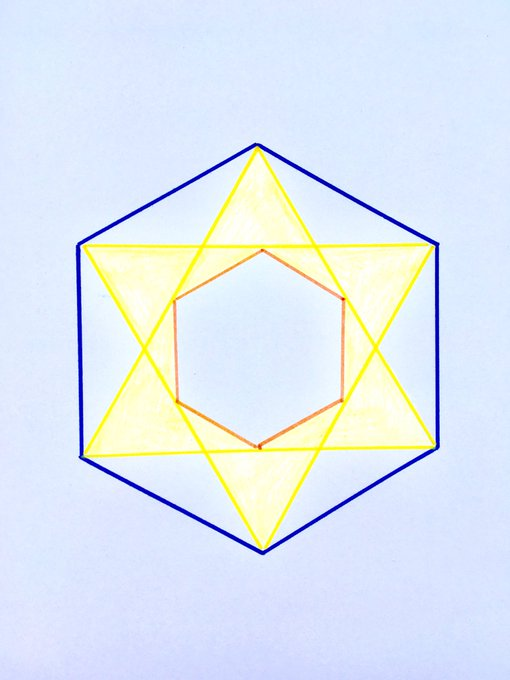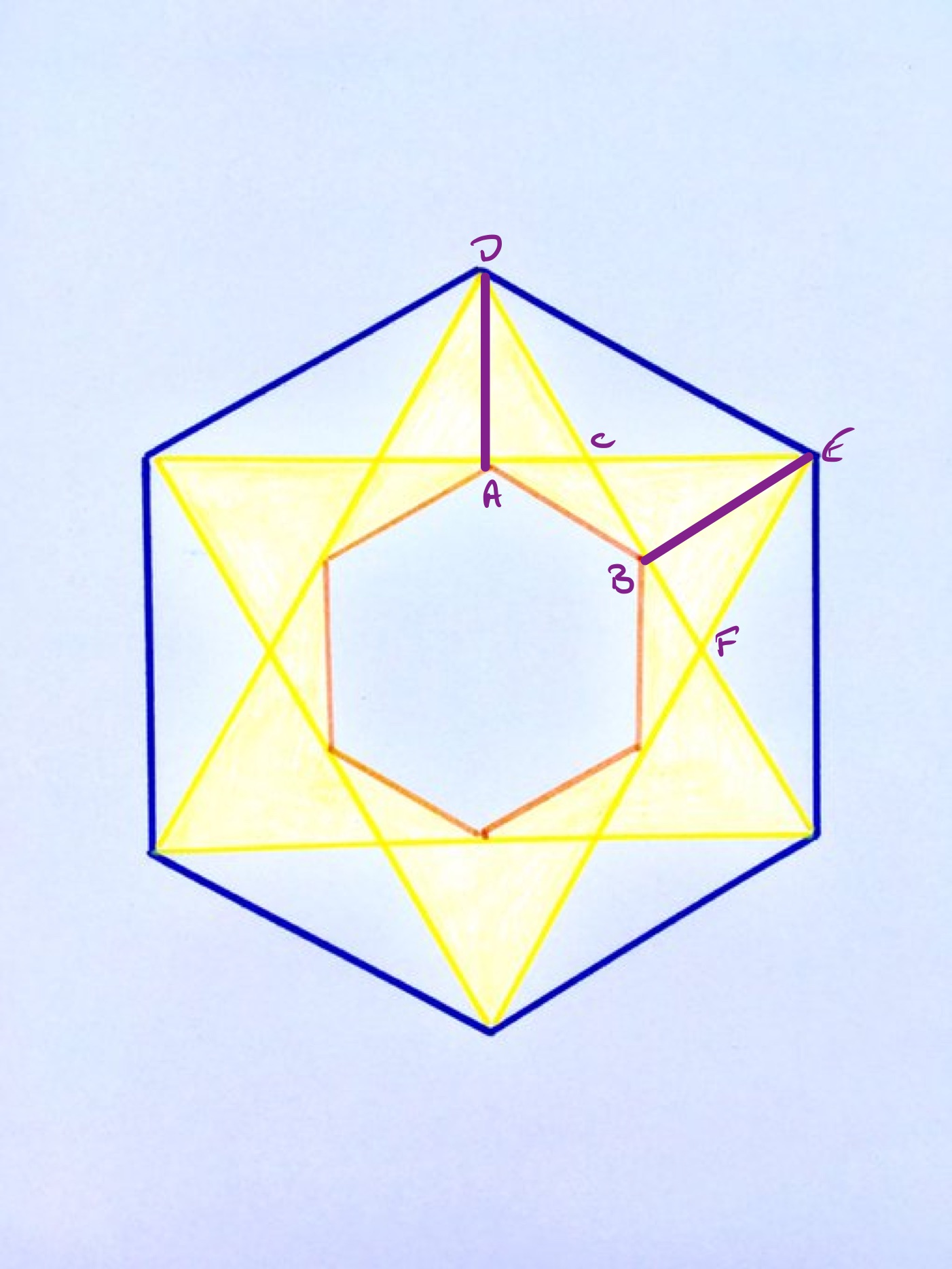Notes
hexagon in a star in a hexagon solution
Hexagon in a Star in a Hexagon

Corresponding sides of the two regular hexagons are parallel. If the small hexagon has an area of , what’s the shaded area?
Solution by Similar Triangles and Crossed Trapezium

In the above diagram, the line segments and are parallel. Angles and are vertically opposite so are equal. Put together, this means that triangles and are similar.
Triangle is equilateral and is the midpoint of , so the length of is half of that of , which has equal length with . This means that the scale factor from triangle to is . So has twice the length of , and since the area scale factor is the square of the length scale factor, the area of the outer hexagon is .
The quadrilateral is a trapezium since and are parallel. Its area is one sixth of the difference between the hexagons, so has area . By considering the areas in a crossed trapezium, triangles and have twice the area of , and has four times that area. Putting that together, triangle has area one ninth of the whole trapezium, so the shaded region inside the trapezium has area . The entire shaded region therefore has area .